This set of Civil Engineering Drawing Multiple Choice Questions & Answers (MCQs) focuses on “Projections of Solids”.
1. A ________ is solid bounded only by plane surfaces (faces).
a) square
b) rectangle
c) regular polyhedron
d) triangle
View Answer
Explanation: In geometry, a polyhedron (plural polyhedra or polyhedrons) is a solid in 3 dimensions with flat polygonal faces, straight edges and sharp corners or vertices. The word polyhedron comes from the Classical Greek. A convex polyhedron is the convex hull of finitely many points, not all on the same plane. Cubes and pyramids are examples of convex polyhedra. A polyhedron is a 3-dimensional example of the more general polytope in any number of dimensions.
2. Which types of prism does the 3rd figure represents?

a) Triangular
b) Square
c) Pentagon
d) Oblique
View Answer
Explanation: A solid (3-dimensional) object which has six faces that are rectangles. It has the same cross-section along a length, which makes it a prism. It is also a “cuboid”.
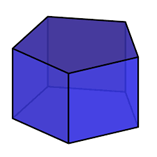
3. Which types of prism does the 6rd figure represents?

a) Triangular
b) Square
c) Pentagon
d) Oblique
View Answer
Explanation: A prism with bases that are not aligned one directly above the other. Note: The lateral faces of an oblique prism are parallelograms. Refer the figure b below.
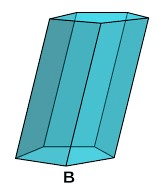
4. Which types of prism does the 2rd figure represents?

a) Triangular
b) Square
c) Pentagon
d) Oblique
View Answer
Explanation: A square prism is a three-dimensional shape with two square bases and flat sides. Therefore, all square prisms consist of at least two squares, even if not all the sides are squares, as long as the bases are square, there is a square prism. Cubes are a common example of squareprisms.
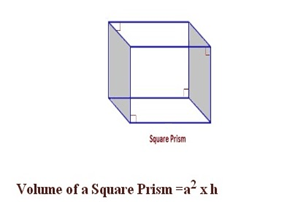
5. Which types of prism does the 5th figure represents?

a) Triangular
b) Square
c) Pentagon
d) Rectangular
View Answer
Explanation: In geometry, a cuboid is a convex polyhedron bounded by six quadrilateral faces, whose polyhedral graph is the same as that of a cube. While mathematical literature refers to any such polyhedron as a cuboid, other sources use “cuboid” to refer to a shape of this type in which each of the faces is a rectangle (and so each pair of adjacent faces meets in a right angle); this more restrictive type of cuboid is also known as a rectangular cuboid, right cuboid, rectangular box, rectangular hexahedron, right rectangular prism, or rectangular parallelepiped.
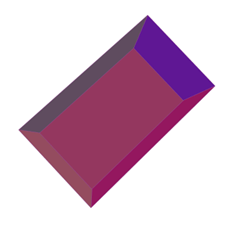
6. Which types of prism does the 1rd figure represents?

a) Triangular
b) Square
c) Pentagon
d) Equilateral triangular
View Answer
Explanation: In geometry, a triangular prism is a three-sided prism; it is a polyhedron made of a triangular base, a translated copy, and 3 faces joining corresponding sides. A right triangular prism has rectangular sides, otherwise it is oblique.
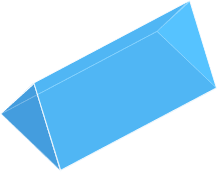
7. Which types of prism does the 4th figure represents?

a) Triangular
b) Hexagonal
c) Pentagon
d) Oblique
View Answer
Explanation: The hexagonal prism is a prism with hexagonal base. This polyhedron has 8 faces, 18 edges, and 12 vertices. Since it has eight faces, it is an octahedron. However, the term octahedron is primarily used to refer to the regular octahedron, which has eight triangular faces.
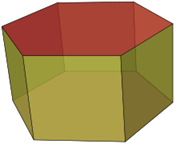
8. What does the dotted line in the centre of the figure represents?
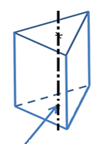
a) Axis
b) Vertical line
c) Separation line
d) Centre line
View Answer
Explanation: It is the imaginary line connecting the end faces is called axis, also a line, used as a reference to determine position, symmetry and rotation is called axis and is shown in figure below. It can be of four types- a) In coordinate geometry and trigonometry as y, x and z axis, b) Axis of symmetry, c) Axis of a solid and d) Axis of rotation.
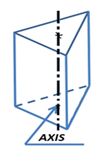
9. When the prism is placed vertically on one of its end faces, the end face on which the prism rests is called the ________ and the vertical side faces are the ________ faces.
a) bottom, lateral
b) base, lateral
c) base, longitudinal
d) horizontal, lateral
View Answer
Explanation: When the prism is placed vertically on one of its end faces, the end face on which the prism rests is called the base and the vertical side faces are the lateral faces.
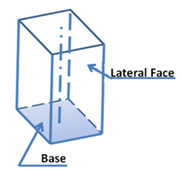
10. When the axis of the pyramid is perpendicular to its base, which pyramid does it represent?
a) Perpendicular pyramid
b) Square pyramid
c) Oblique pyramid
d) Right pyramid
View Answer
Explanation: A right pyramid is a pyramid with a base that is a regular polygon and whose apex is directly above the centre of the base. The surface area of a right pyramid can be calculated, using. the following formula: SA 5 B 1. Ps, where B is the area of the base, P is the perimeter of the base, and s is the slant height.
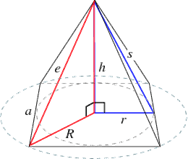
11. On projection of a cylinder on a plane, the shape appeared by front view will be _____________
a) line
b) square
c) point
d) rectangle
View Answer
Explanation: When the solid is placed with the base on HP position, in the top view, the base will be projected in its true shape. Hence, when the base of the solid is on HP, the top view is drawn first and then the front view and the side views are projected from it. Figure 10 shows a cylinder with its axis perpendicular to HP. There is only one position in which a cylinder or a cone may be placed with its base on HP.
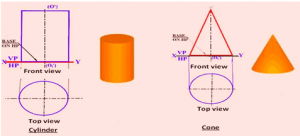
Sanfoundry Global Education & Learning Series – Civil Engineering Drawing.
To practice all areas of Civil Engineering Drawing, here is complete set of 1000+ Multiple Choice Questions and Answers.
If you find a mistake in question / option / answer, kindly take a screenshot and email to [email protected]
- Apply for Civil Engineering Internship
- Check Civil Engineering Drawing Books
- Practice Civil Engineering MCQs
- Check Civil Engineering Books
